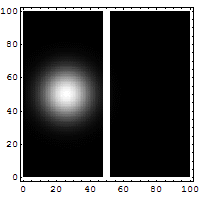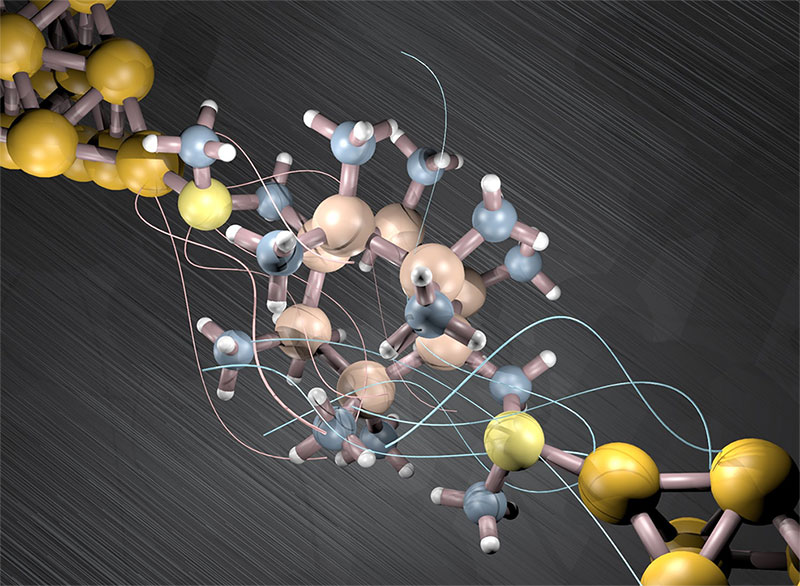
11th June 2018 Single molecular insulator could extend Moore's Law A breakthrough published in Nature could pave the way for smaller transistors in the next decade. Ever-shrinking transistors are the key to faster and more efficient computer processing. Since the 1970s, advancements in electronics have largely been driven by the exponential pace at which these tiny components have grown simultaneously smaller and more powerful – right down to their current dimensions on the nanometre scale. But recent years have seen this progress begin to slow down, as researchers debate whether transistors may be finally reaching their size limit. High among the list of hurdles standing in the way of further miniaturisation: problems caused by "leakage current." Leakage current is when the gap between two metal electrodes narrows so much that electrons are no longer contained by their barriers, a phenomenon called quantum tunnelling. This effect can be seen in the GIF animation below, with an electron wavepacket directed at a potential barrier. Note the dim spot on the right that represents tunnelling electrons. As the gap continues to shrink, this leakage increases exponentially, rendering further miniaturisation extremely challenging. Scientific consensus has long held that vacuum barriers represent the most effective means to curtail tunnelling, making them the best overall option for insulating transistors. However, even a vacuum barrier can allow for some leakage due to quantum tunnelling.
Now, in a collaboration between Columbia University, the University of Copenhagen, and Shanghai Normal University, a team of researchers have upended conventional wisdom – synthesising the first molecule capable of insulating at the nanometre scale more effectively than a vacuum barrier. Their findings are published in the journal Nature. "We've reached the point where it's critical for researchers to develop creative solutions for redesigning insulators," says Columbia Engineering physicist and study co-author Latha Venkataraman. "Our molecular strategy represents a new design principle for classic devices, with the potential to support continued miniaturisation in the near term." The team's breakthrough was to exploit the wave nature of electrons. By designing an extremely rigid silicon-based molecule under 1 nm in length (illustrated below) that exhibited comprehensive destructive interference signatures, they devised a novel technique for blocking tunnelling conduction at the nanoscale. "This quantum interference-based approach sets a new standard for short insulating molecules," said lead author Marc Garner, a chemist in the University of Copenhagen's Solomon Lab, which handled the theoretical work. "Theoretically, interference can lead to complete cancellation of tunnelling probability, and we've shown that the insulating component in our molecule is less conducting than a vacuum gap of same dimensions. At the same time, our work also improves on recent research into carbon-based systems, which were thought to be the best molecular insulators until now."
Comments »
If you enjoyed this article, please consider sharing it:
|








